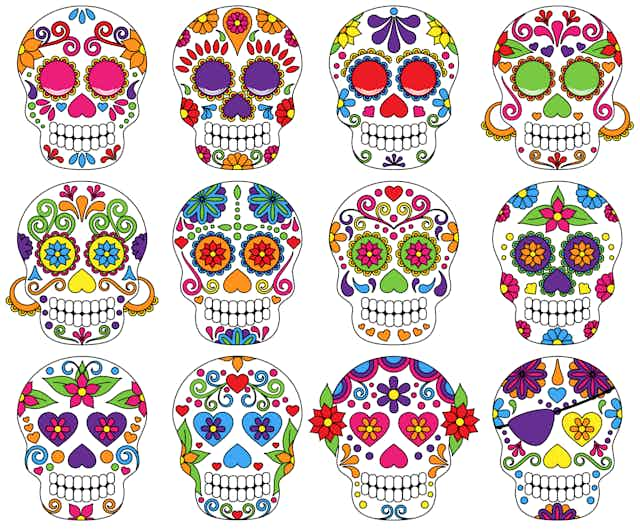Halloween is boring. I used to think this quite often when I was young. Not because I didn’t enjoy wearing costumes or collecting candy or even being chased by random neighbourhood dogs while trick or treating. No, I had a problem with Halloween because of all the coffins, skeletons, and fake tombstones. These things were supposed to make you scared, shiver and scream – and other children revelled in the fear. I, on the other hand, had a strong ambivalence towards all things death because my father was a funeral director.
This might sound strange to most people since the local funeral home does, I know quite well, occupy a unique place in neighbourhoods, particularly those of small towns. Their bland banality is in itself macabre. But let me tell you: funeral homes are actually really, really boring. Countless, tedious hours of my youth were spent watching my father vacuum, move floral arrangements, and type death announcements.
Caskets and coffins never freaked me out. Why would they? The different sounds I could make as a kid tapping on the bronze caskets vs. the hardwood caskets were acoustically amazing. Don’t worry — they were always empty. I also grew up surrounded by anatomy textbooks, so seeing a skeleton just made me want to start pointing out the radius, the ulna and the phalanges.

Death, for me, became (and remains) such an everyday, normal event that the “scary” props used during Halloween just seemed silly. I remember thinking to myself on more than one occasion that a human body would never fit inside one of those store-bought fake caskets sitting on someone’s lawn. A dead dog, maybe, but never a dead person.
My costumes during those years often reflected a decidedly non-death approach to Halloween. I was a clown, a werewolf, a Jawa from Star Wars, a gorilla and then a gorilla wearing a three-piece suit the next year. The list goes on and on.
This was my youth. The intervening years have seen those plastic tombstones and coffins set on a path to dominate the world. And it doesn’t stop here. It really does seem as if anything that passes for an “authentic” cultural practice involving the dead is fair game today for appropriation, co-option, and outright commodification during the month of October.
In particular, I’ve noted these past few years how the indigenous Mexican holiday Día de Muertos (Day of the Dead) practises have become achingly cool for gringos all over the western world. Most mainstream media outlets can’t run enough stories on, say, skull face make-up and prayers to Santa Muerte.

Those cute but still, you know, creepy sugar skulls have never been more fashionable for middle-class people everywhere. Kate Hudson, for one, has already been photographed sporting sugar skull face-paint. I know. I know. Christopher Columbus is a hard habit to break.
It seems obvious to me that 2015’s hot new death practices will probably involve DIY Tibetan Sky burial kits sold online. There seems to be no stopping it.
Perhaps I’m being unfair, since the English-speaking first world really can’t stop itself from consuming anything to do with death. Lana del Rey wants to be dead. Lady Gaga staged her own death. Traditions surrounding death have never been so sexy.
None of this is necessarily bad, inasmuch as trying to stop it would be like trying to catch Niagara Falls in a drinking cup. Perhaps the Day of the Dead craze will encourage people to think about different cultures, rather than simply rioting over pumpkins like one New Hampshire town.
Besides, commercially extreme as it is, keeping some vestige of a cultural practice about death is better than watching that same practise become truly dead.
Oddly enough, I’ve grown nostalgic for the Halloweens of my youth. During the heyday of plastic, store-bought costumes that might catch fire at any minute and neighbours who put broken glass in the mini-candy bars – at least Halloween never tried to be a quasi-authentic cultural experience of any kind. It was mostly about the older neighbourhood kids hiding in the bushes and jumping out to scare us. Then we’d go smash the occasional jack-o-lantern before telling ghost stories.
Here’s to hoping that Halloween comes full circle and once again becomes dead boring. As weird as it may seem coming from a person who grew up around funeral homes, Halloween then was, well, just less “scary” but also more interesting. And that’s saying a lot.

